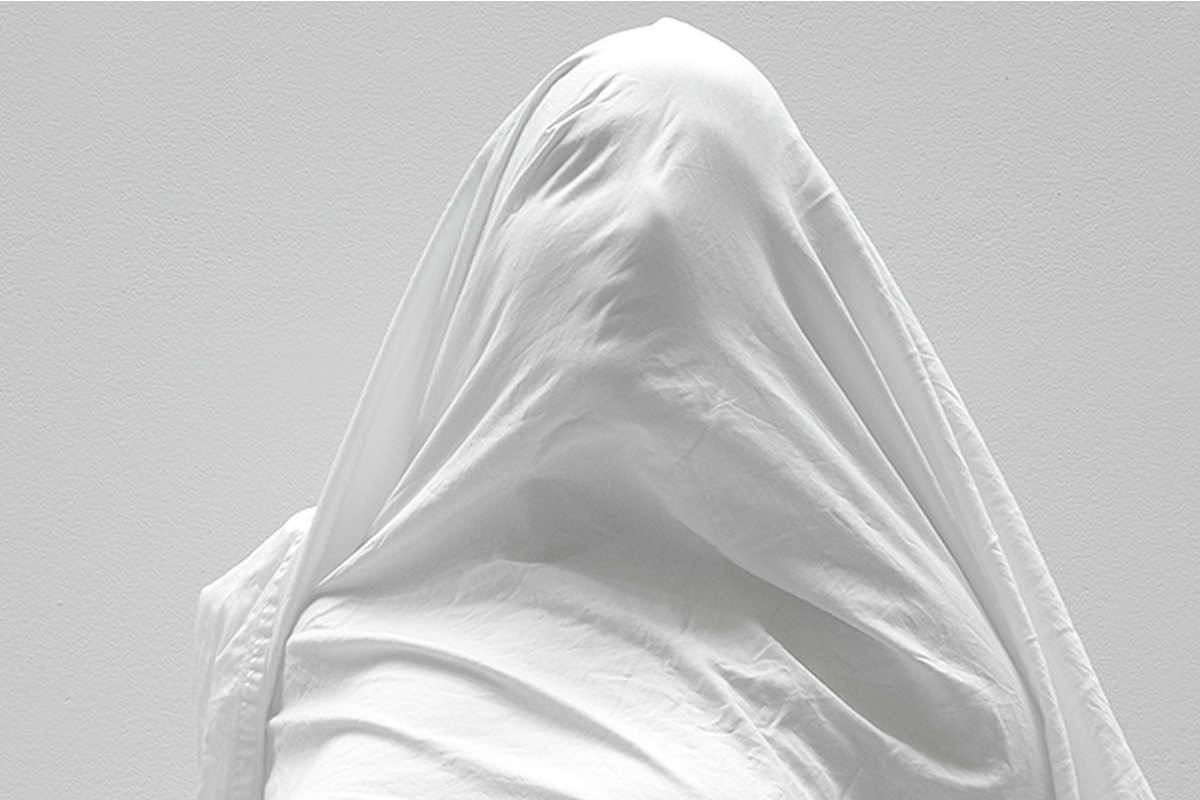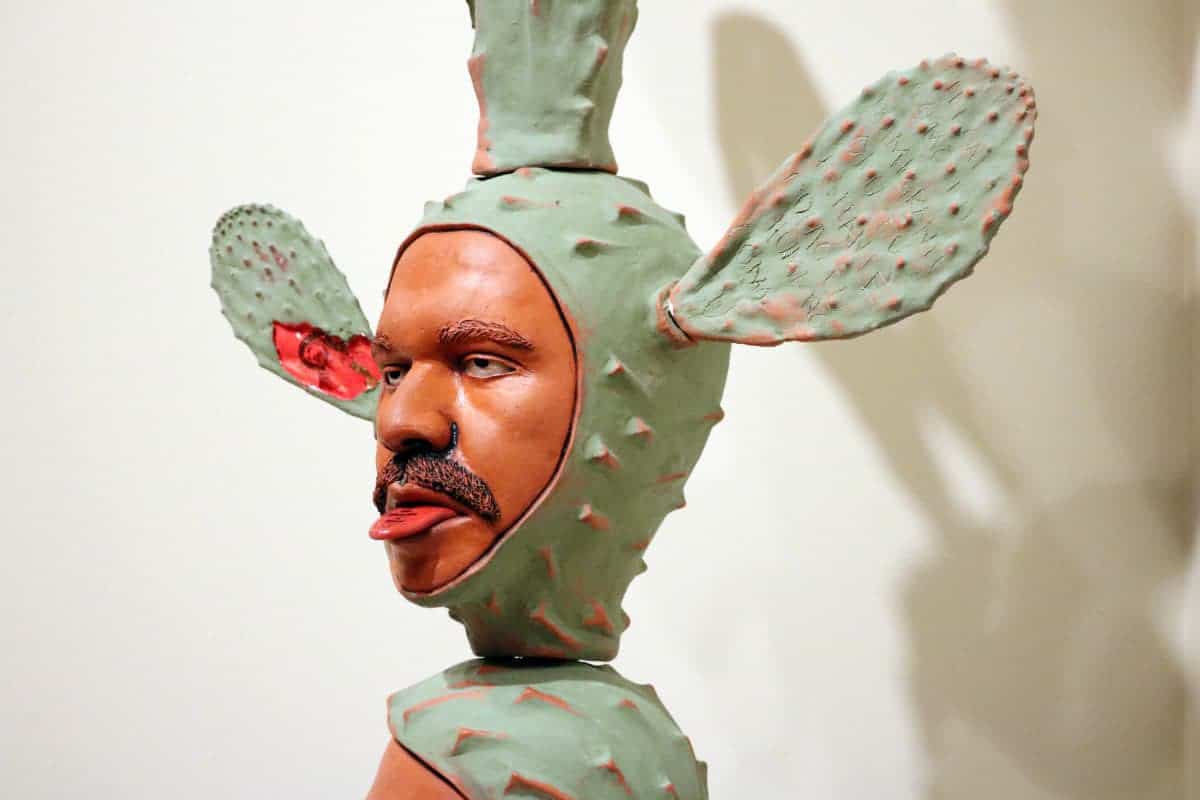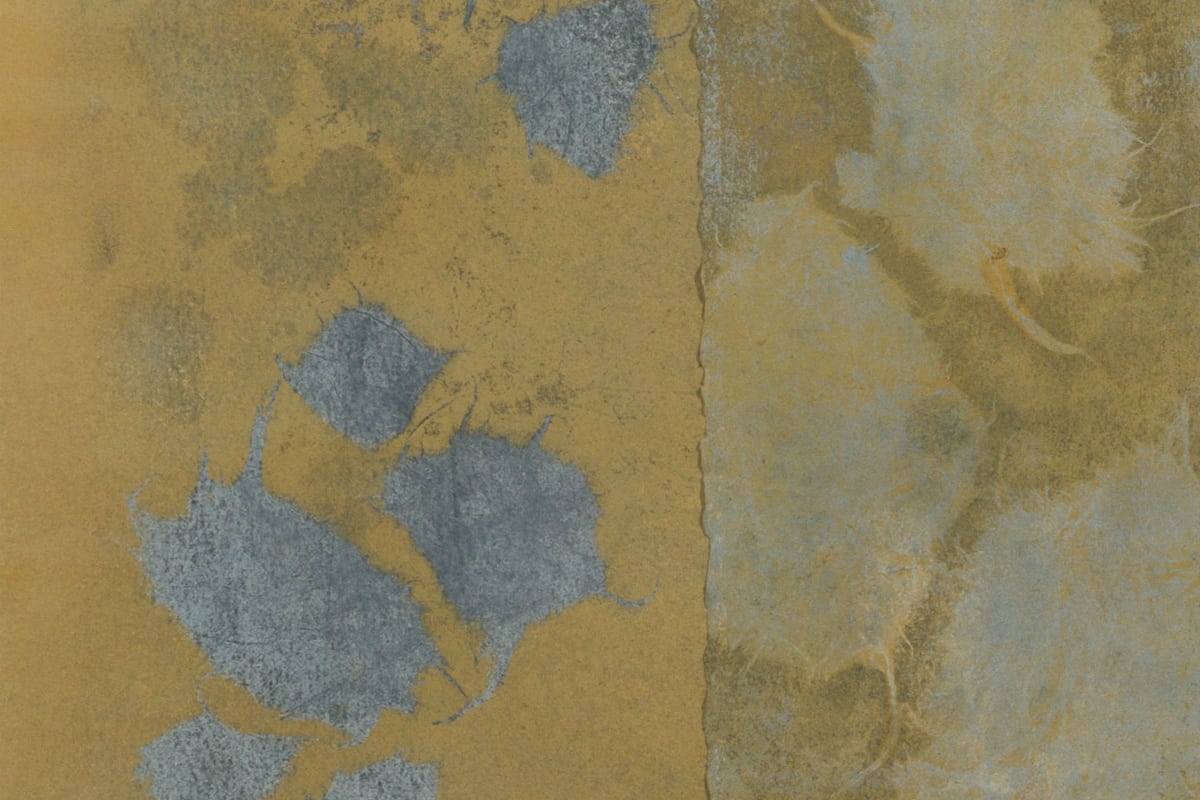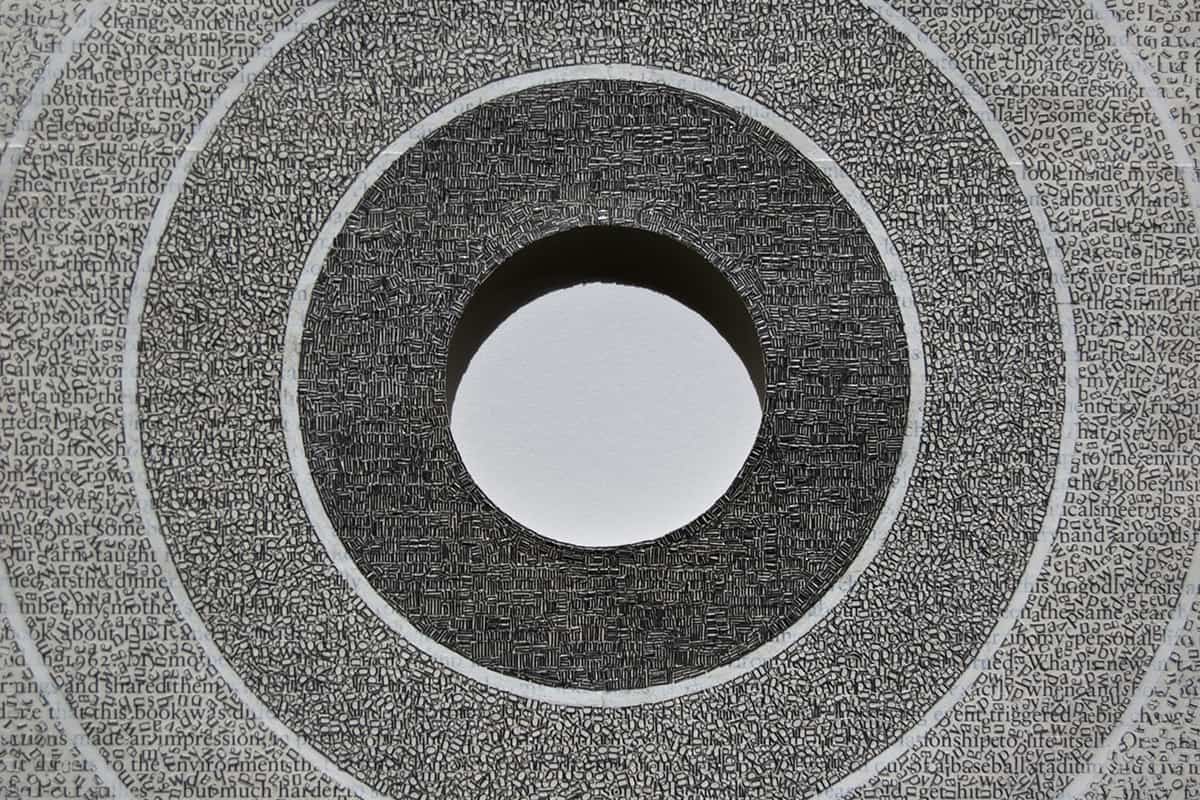Connecticut photographer Judith Thorpe on the female body, religious iconography, and her life behind a camera.
At four years old, Judith Thorpe proclaimed to her parents that she wanted to be a photographer, having little idea what that word actually meant. Her mother and father, who she lovingly describes as “professional amateur photographers,” never had any formal training besides a decent camera and a keen eye for the world around them.
Thorpe was raised by a deeply Catholic mother, and attended a parochial grade school and later a private girls’ Catholic high school. Her current work, The Passions, reflects a lifetime of skilled intimacy behind a camera, evoking complex religious iconography, with her body as the subject; it’s an accurate reflection of her upbringing.
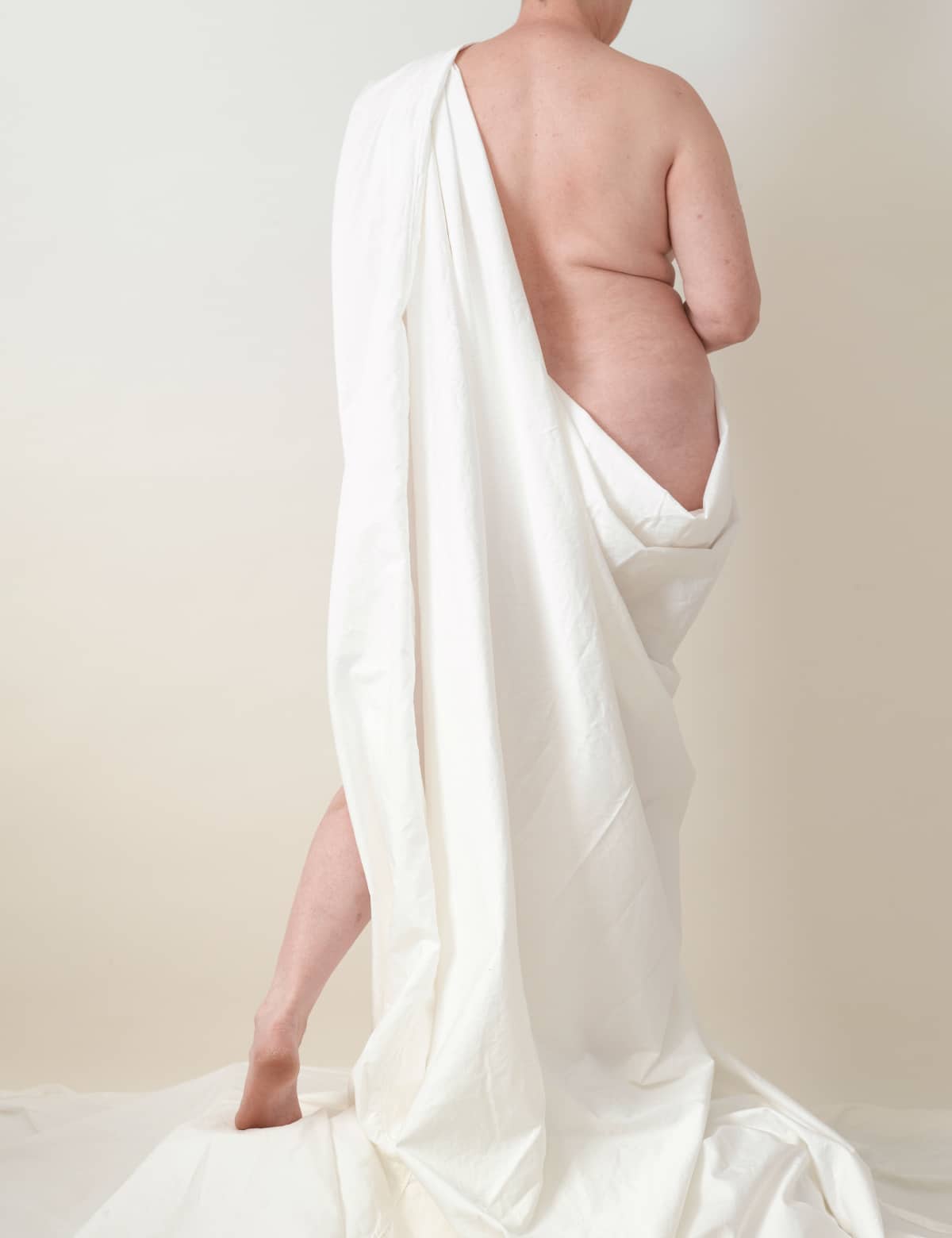
Adoration by Judith Thorpe
“The female icons that I became familiar with [are] perplexing and conflicting,” she says about The Passions, her ongoing project that can be seen in part on exhibition at the New Bedford Art Museum. “The symbols of Aphrodite, Venus, and the Virgin Mary [are] complex and contradictory. The woman [is] virginal but coy, maternal but sexual, chaste but pregnant.” The stories of women’s bodies portrayed through religious storytelling and reimagined through mainstream media shape the way that women relate to their bodies, she says.
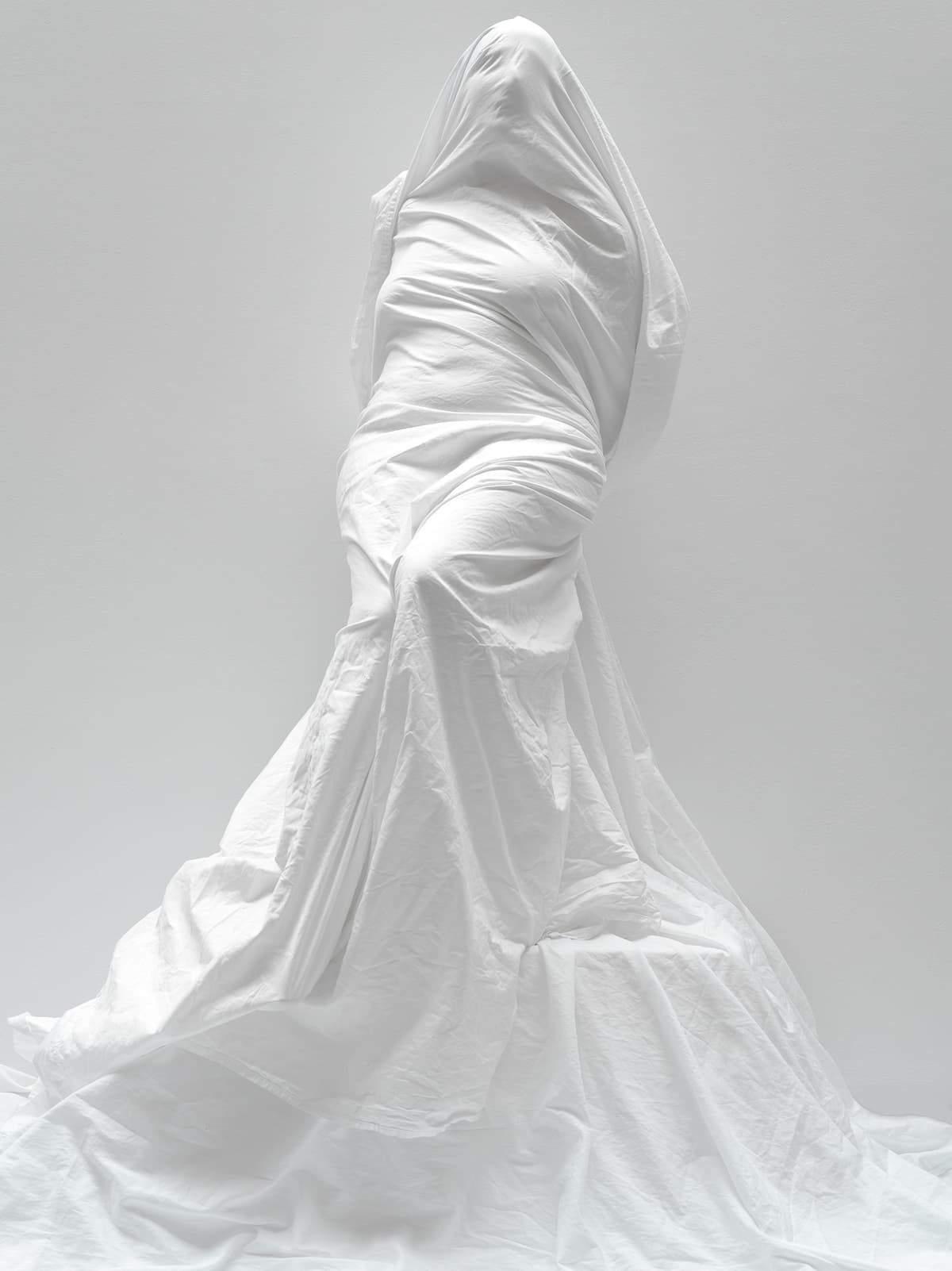
The Passions, “Ecstasy,” by Judith Thorpe
“I am interested in these stories because they are so often told through male interpretation, as if Mary is so pleased to be the vessel for carrying Jesus. And I am thinking to myself, ‘Is she experiencing fear?’” says Thorpe. “I ask these uncomfortable questions as I am looking at art about the Annunciation. Is she experiencing pain? Is she sexually excited by this? And I see that Mary has her arms behind her. Is this rape? And no one wants to ask these uncomfortable questions. It freaks them out because it is taboo.”
The Passions exudes an undeniable air of eroticism and iconographic familiarity. Thorpe’s body, cloaked in a white sheet and displayed in a manifest of shadows and folds, highlights certain erotic details while obscuring others. Her imagery from afar looks like a marble statue akin to Greek and Roman statues.
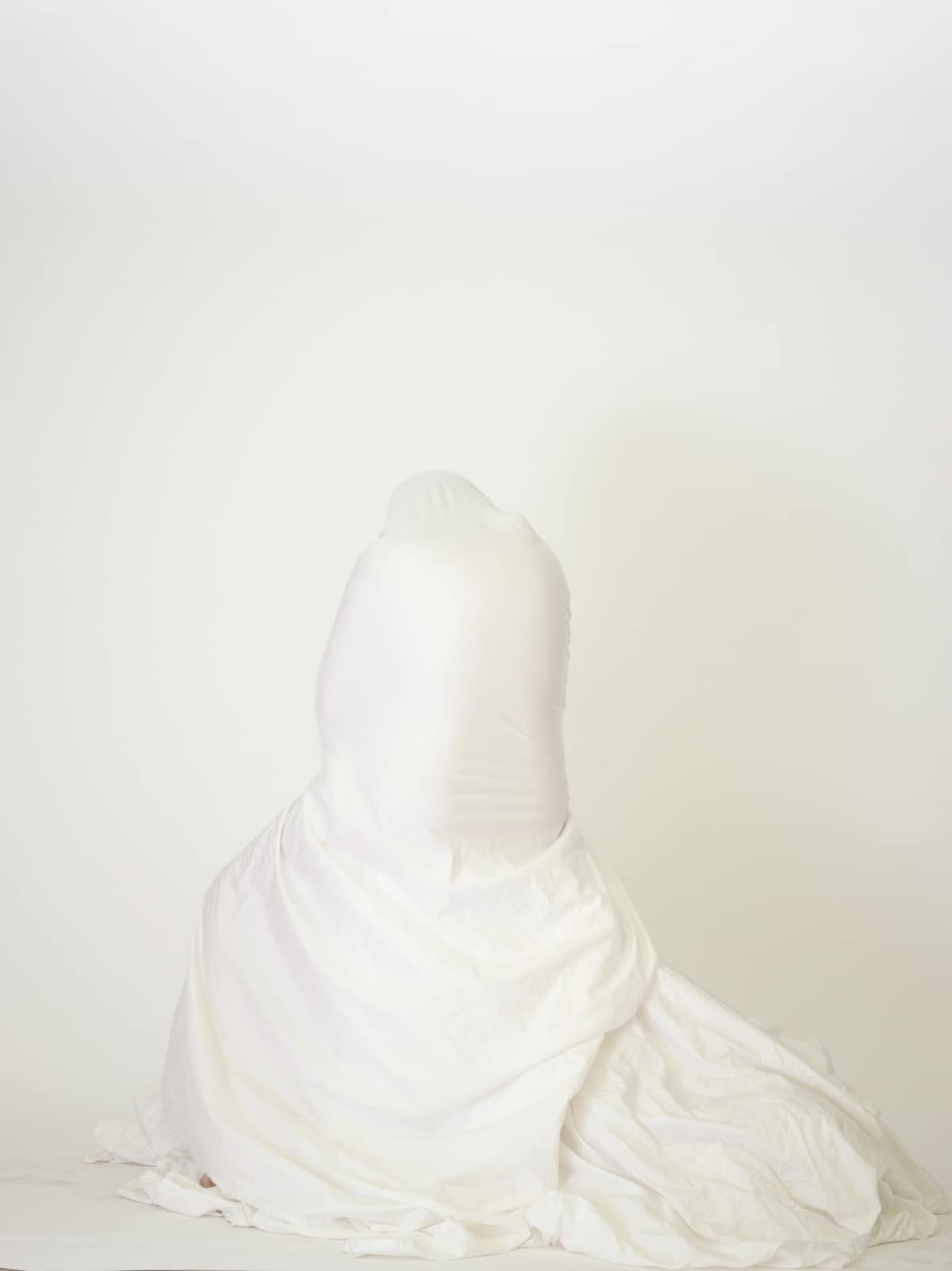
The Passions, “Lamentation,” by Judith Thorpe
The Passions has many chapters through which we observe Thorpe’s self. In “Transcendent,” her body is beautifully exposed while “Consecration” shows her in fraught constriction with the white sheet. “This work is a process of reflection,” she says. “As the female body ages, it is much harder to align ourselves with the standards of the male gaze. This work is both a reflection and for me, a place to move forward from that.”

